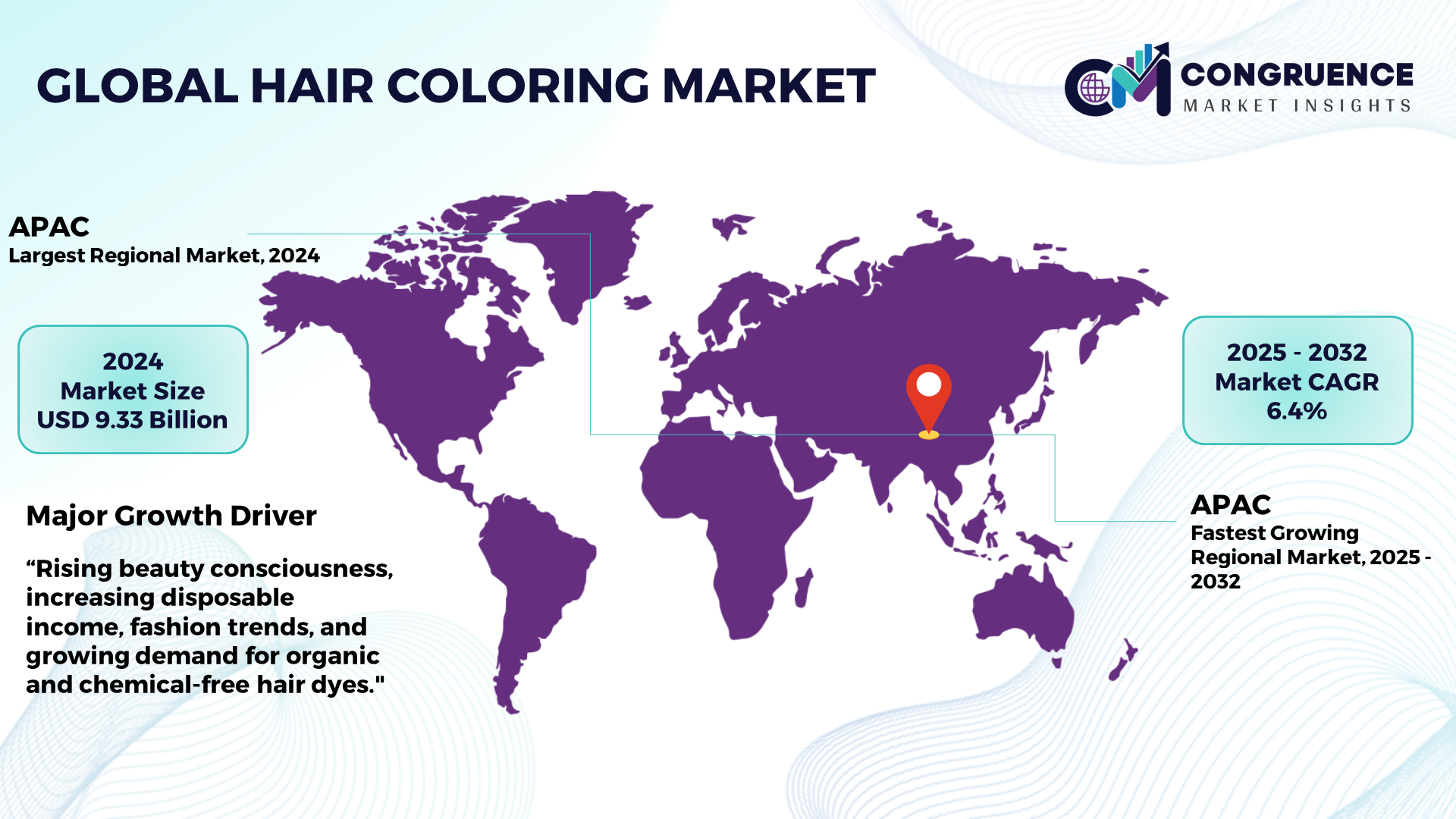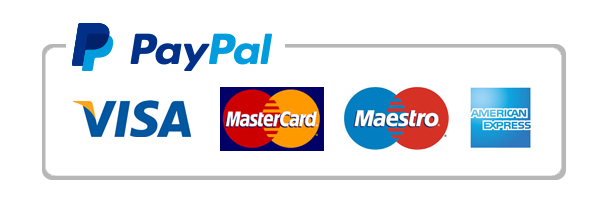Reports
Hair Coloring Market Report Overview
The Global Hair Coloring Market was valued at USD 25.69 Billion in 2024 and is anticipated to reach a value of USD 39.80 Billion by 2032 expanding at a CAGR of 5.7% between 2025 and 2032. This increase is fueled by the increasing demand for hair coloring products among a varied consumer base, including younger and older demographics, both men and women. Rising trends in personal grooming, altering fashion tastes, and the influence of social media on beauty standards are significant factors contributing to market growth.

To Learn More About This Report, Request A Free Sample Copy
The hair coloring industry has undergone tremendous expansion in recent years due to changing customer tastes and the increasing influence of beauty trends. Hair coloring is no longer confined to gray covers, with individuals of all ages adopting hair coloring for fashion and personal expression. The introduction of social media and the growth of beauty influencers have hastened the acceptance of numerous hair color trends, including highlights, balayage, and ombré styles.
Innovations in product formulas, such as organic and ammonia-free hair dyes, have also attracted health-conscious consumers. Additionally, the booming male grooming industry has contributed to the market expansion, with men increasingly embracing hair coloring products.
The increased usage of hair color products in salons and the rise of at-home hair coloring kits have further bolstered demand. Technological developments in hair color formulations, delivering ammonia-free and organic treatments, are also attracting ecologically aware consumers. Additionally, the advent of temporary hair colors and easy-to-use spray forms is broadening the consumer base, providing quick and convenient hair coloring alternatives.
The market is poised for continuous expansion, driven by the growing beauty sector, technical advancements in product composition, and the increasing need for tailored grooming solutions. With the development of eco-friendly and user-friendly products, the hair coloring business is destined to serve to a bigger audience globally.
How AI is Transforming Hair Coloring Market
Artificial Intelligence (AI) is transforming the hair coloring market, giving individualized solutions, improving product formulas, and better customer experiences. One of the most notable applications of AI is in virtual hair color assessment. AI-powered tools, typically integrated into beauty apps, allow users to visualize alternative hair colors in real-time before making a purchase. This individualized virtual experience not only boosts consumer happiness but also lowers the need for trial-and-error in salons.
AI is also streamlining product development procedures. By evaluating massive volumes of customer data and trends, AI systems may forecast future hair color trends, enabling businesses to build novel solutions suited to client tastes. AI-driven insights help in producing hair colors that are more sustainable, easier on hair, and ideal for varied hair types and textures.
Moreover, AI is enhancing supply chain management for hair coloring goods. By studying sales patterns and market demands, AI can optimize inventory management, assuring timely product availability and eliminating wastage. AI-driven marketing methods can help firms to personalize their outreach efforts, delivering unique product recommendations based on individual tastes.
In the future, AI's role in producing individual hair color formulations and offering real-time hair diagnostics in salons would undoubtedly further change the hair coloring industry.
Hair Coloring Market Major Driving Forces
· Growing Beauty Consciousness: Increased focus on personal care and appearance has greatly pushed the market for hair coloring products across all age groups. Younger consumers are experimenting with brilliant colors, while older populations seek items for gray covering.
· Rise in DIY Hair Coloring Kits: The convenience of at-home hair coloring kits has contributed to market expansion, notably in the wake of the COVID-19 outbreak, which curtailed salon visits. The development of easy-to-use, ammonia-free kits has enlarged the market base.
· Social Media Influence: Social media platforms such as Instagram and TikTok have spurred demand for trendy and vivid hair colors. Influencers play a vital role in popularizing new styles, pushing customers to adopt these trends.
· Technological Advancements: Innovations in product compositions, including organic and ammonia-free hair colors, are appealing to environmentally concerned and health-sensitive consumers, further boosting market expansion.
· Expanding Male Grooming Sector: The increased consumption of hair coloring products by males is generating a new market sector, contributing to total market expansion.
Hair Coloring Market Key Opportunities
· Expansion in Emerging Markets: Rapid urbanization and increased disposable income in emerging economies such as India, China, and Brazil present major growth potential for the hair coloring sector. The expanding influence of Western beauty trends in these regions is fueling demand.
· Development of Sustainable and Eco-Friendly Products: As customers grow more environmentally concerned, there is a rising demand for sustainable hair coloring options. This opens up chances for companies to produce and promote eco-friendly, cruelty-free, and biodegradable hair color products.
· Growth in Organic and Ammonia-Free Products: Increasing public awareness of the hazardous consequences of chemicals used in hair colors is boosting the demand for ammonia-free and organic products. Companies supplying natural and gentle formulas are expected to acquire a competitive advantage.
· E-commerce Expansion: The rise of online retail channels presents a chance for hair color makers to access a bigger audience. Personalized online consultations and AI-powered virtual try-ons can enhance the online purchasing experience, further boosting sales.
Hair Coloring Market Key Trends
· There is a growing trend towards experimenting with bold and unique hair colors such as neon pink, purple, and blue. Younger consumers are adopting these colors as a form of self-expression, forcing producers to innovate and expand their product offerings.
· Temporary hair colors, including sprays and wash-out solutions, are gaining appeal as they allow consumers to experiment with new styles without long-term commitment.
· Consumers are increasingly flocking towards items manufactured with natural and organic components. Hair color brands are responding by offering formulations that minimize the usage of toxic chemicals.
· Salons are now offering bespoke hair color solutions tailored to individual preferences, including custom-mixed hues and specific treatment schedules to maintain hair health.
· Subscription models for hair color kits, giving monthly or bi-monthly deliveries, are gaining popularity, providing convenience and consistency to consumers.
Region-wise Market Insights
Asia Pacific accounted for the largest market share at 36.3% in 2024 moreover, Asia Pacific is also expected to register the fastest growth, expanding at a CAGR of 6.4% between 2025 and 2032.

To Learn More About This Report, Request A Free Sample Copy
Asia Pacific held the greatest share of the global hair coloring market in 2024. The region is predicted to develop at the fastest rate, with a CAGR of 6.4% during the projection period. This growth is fueled by rising disposable incomes, greater beauty consciousness, and the expanding influence of social media in nations such as China, India, and Japan. The increased popularity of DIY hair coloring products and expanding salon services are also contributing to market expansion.
· In July 2024, L’Oréal Paris launched Colorsonic, a new hair color innovation, now exclusively available at Target. The device provides an easy, mess-free at-home hair coloring experience with precise application. Colorsonic's launch emphasizes convenience and innovation for users seeking professional-quality results at home.
North America follows closely, led by the strong presence of top hair color brands and a significant demand for luxury hair care products. In Europe, countries such as France, Germany, and the UK are witnessing consistent demand, with a rising focus on natural and organic hair colors. The Middle East & Africa and South America regions are enjoying moderate expansion, with a greater focus on product innovation to appeal to varied hair textures and preferences.
Recent Developments
· In July 2024, TRESemmé introduced a shine-boosting technology to align with the year's hottest hair trend: high-shine finishes. The brand's innovative formula targets glossy, smooth hair, addressing consumer demand for salon-quality results at home. This move strengthens TRESemmé’s commitment to styling performance.
· In January 2024, L’Oréal Paris launched the "My Hair Color, My Expression" campaign, promoting individuality and self-expression through hair color. The campaign emphasizes personal style and features diverse influencers, encouraging consumers to embrace bold, vibrant hair colors as a form of identity and creativity.
· In February 2023, Revlon's Top Speed range in India underwent a packaging makeover. The refreshed look is aimed at enhancing the visual appeal of the product while maintaining its fast-drying formula, designed for convenience and vibrant color. This change reflects Revlon’s commitment to keeping the product line modern and competitive in the Indian market.
Market Competition Landscape
The global hair coloring market is highly competitive, with leading competitors concentrating on product innovation, sustainability, and AI-driven consumer interaction methods to acquire a competitive edge. Leading firms are investing in research and development to provide eco-friendly and ammonia-free solutions that respond to the growing need for safe, high-quality hair colors. Key initiatives include mergers and acquisitions, brand collaborations, and strategic alliances with beauty shops and e-commerce platforms to enhance market reach.
Brands such as L'Oréal, Henkel, and Coty Inc. dominate the global market with vast product ranges and a strong presence across numerous distribution channels. Regional players in emerging countries are also gaining importance by offering affordable, high-quality alternatives customized to local interests.
Key players in the global hair coloring market implement various organic and inorganic strategies to strengthen and improve their market positioning. Prominent players in the market include:
· L'Oréal
· Henkel AG & Co. KGaA
· Coty Inc.
· Revlon Inc.
· Unilever
· Kao Corporation
· Avon Products Inc.
· Godrej Consumer Products Ltd.
· Shiseido Company, Limited
· Estée Lauder Companies Inc.
· Combe Incorporated
· Procter & Gamble
· Wella Professionals
· Garnier
|
Report Attribute/Metric |
Details |
|
Market Revenue in 2024 |
USD 25.69 Billion |
|
Market Revenue in 2032 |
USD 39.80 Billion |
|
CAGR (2025 – 2032) |
5.7% |
|
Base Year |
2024 |
|
Forecast Period |
2025 – 2032 |
|
Historical Data |
2020 to 2024 |
|
Forecast Unit |
Value (US$ Bn) |
|
Key Report Deliverable |
Revenue Forecast, Growth Trends, Market Dynamics, Segmental Overview, Regional and Country-wise Analysis, Competition Landscape |
|
Segments Covered |
· By Type (Permanent Hair Color, Semi-Permanent Hair Color, Temporary Hair Color, and Highlights/Bleach) · By Form (Cream, Gel, Spray, Powder, and Others) · By Distribution Channel (Supermarkets/Hypermarkets, Online Channels, Specialty Stores, and Salons) · By End-Use (Men and Women) |
|
Geographies Covered |
North America: U.S., Canada and Mexico Europe: Germany, France, U.K., Italy, Spain, and Rest of Europe Asia Pacific: China, India, Japan, South Korea, Southeast Asia, and Rest of Asia Pacific South America: Brazil, Argentina, and Rest of Latin America Middle East & Africa: GCC Countries, South Africa, and Rest of Middle East & Africa |
|
Key Players Analyzed |
L'Oréal, Henkel AG & Co. KGaA, Coty Inc., Revlon Inc., Unilever, Kao Corporation, Avon Products Inc., Godrej Consumer Products Ltd., Shiseido Company, Limited, Estée Lauder Companies Inc., Combe Incorporated, Procter & Gamble, Wella Professionals, Garnier. |
|
Customization & Pricing |
Available on Request (10% Customization is Free) |
